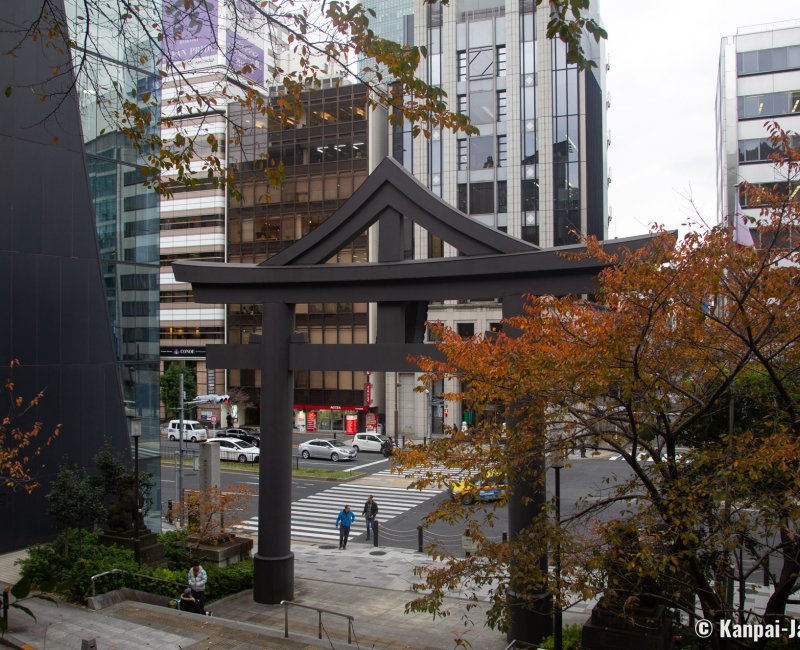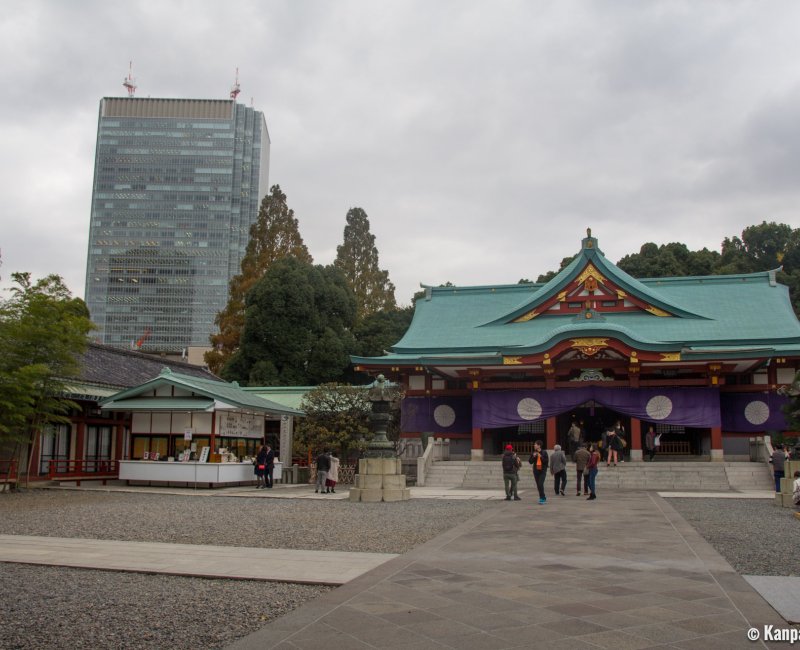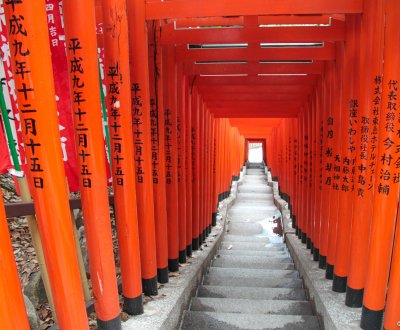Hie-jinja
The Shrine Protecting the Capital
Hie-jinja is a great shrine located on a hill between Akasaka and Nagatacho business districts, in the center of Tokyo. Surrounded by tall office buildings, the Shinto site offers to the neighborhood’s salarymen and families a peaceful place of recollection, alongside a pleasant alley of vermilion torii gates. Every 2 years, Sanno Matsuri, one of the most important festivals of the capital, is held in its grounds.
The oldest traces of the shrines’ presence date back to the Kamakura period (1185 - 1333). Hie-jinja later became the shrine protecting the Edo Castle 🏯, at the time of its construction by Ota Dokan in 1478. In 1659, it was moved to its current location under the impulsion of Tokugawa Ietsuna (1641 - 1680). At the end of the Tokugawa Shogunate, the site continued to guard a place of power, watching over the Imperial Palace. It enshrines the guardian deity of Tokyo and is still an important shrine for the capital’s inhabitants.
As a Hie shrine, the main kami deity worshiped is the god of Mount Hiei in Shiga prefecture, named Oyamakui-no-kami or Sanno-no-kami, whose divine messenger is the monkey 🐒. This animal is therefore largely pictured here, especially in statues.
Hie-jinja is standing on a small hill, to which one can access by 3 different ways:
- The main entrance in the east, that directly introduces into the sacred grounds.
- The most majestic in the south, marked by a high torii ⛩️ gate as well as long stairways, sided by escalators; and,
- The most discreet one, in the west, opens on the back of the grounds and the torii gates tunnel.

Vermilion buildings and torii gates tunnel
Hie-jinja’s pavilions were built in the gongen-zukuri architectural style, with the haiden and hondo pavilions sharing the same roof, but were destroyed during WWII bombings. The current days’ constructions, of a bright vermilion, are covered by a green copper roof, dating back to 1958.
Lost among the buildings and despite its important role in the capital’s history, the shrine is rarely busy. One can therefore enjoy its relaxing atmosphere under the trees surrounding the grounds for a spiritual halt in the heart of the bustling city. The large alleys and the impressive buildings accommodate groups of worshipers for the daily Shinto rituals, mainly family celebrations on the weekend, such as weddings or ceremonies for children (e.g. Shichi-go-san in November).
Hie-jinja’s extra is found at the back of its sacred grounds, with the secondary Inari shrine and its vermilion torii gates alley going down towards the street. There is almost no passersby so one can make the most of the shaded stairways scenery to take beautiful pictures like in Kyoto’s Fushimi Inari Taisha.

Sanno Matsuri
Hie-jinja is very popular among Tokyo inhabitants especially on the occasion of its grand festival called Sanno Matsuri (山王祭). It takes place every 2 years, on even years around June 15th, alternating with Kanda Myojin’s Kanda Matsuri.
The great procession gathers 500 participants carrying portable mikoshi shrines in the streets of Tokyo’s center, for one day. The itinerary goes through Tokyo Imperial Palace, Yasukuni Shrine and Nihonbashi Hie-jinja shrine. Hie-jinja’s head priest is the only cleric allowed to pray at the Kokyo Palace since the Edo period ((1613 - 1868).
Hie-jinja is a must-see visit all year round for tourists roaming in the chic neighborhoods of Akasaka and Nagatocho, home to several of the government's bodies, such as the Diet, the Prime Minister’s Office, and several embassies.


